2024 Volkswagen Atlas Cross Sport Review – Atlas Slimmed

Part of the presentation that Volkswagen reps gave to assembled media in upstate New York last week centered on how Volkswagen has spent the last decade changing its product mix from one dominated by cars to one dominated by utility vehicles.
The Volkswagen Atlas and its little brother, the five-seat Atlas Cross Sport, have been a key part of that mix. Both are refreshed for this year, though as I wrote Friday, the changes are subtle enough that one must look closely to see how the 2024 Volkswagen Atlas Cross Sport differs from its predecessor.
(Full disclosure: Volkswagen fed and housed me for one night in a resort focused on upscale camping. The company flew me to the Catskills via Albany so I could drive both versions of the Atlas. They gave us a star chart, a coffee mug, and some fancy bar soap. I took the star chart and mug and left the soap behind.)
The Cross Sport is so similar to the seven-seat Atlas that I considered writing only one review, but hey, we have a content (and SEO) beast to feed. So you can read some fresh words about the Cross Sport right here, right now.
Like the seven-seater, the Atlas Cross Sport no longer offers a powertrain choice. The sole available engine is a 2.0-liter turbocharged four-cylinder – a version of the EA888 that’s found on the Golf R, GTI, and Arteon, though this one is tuned differently since this is a family vehicle and not a sports car. This engine is also different from the EA888 offered on the previous generation.
The VR6 is gone, though there’s not much horsepower drop-off from that engine to this one – there’s a mere 7 fewer horsepower. The new mill makes 269 ponies and 273 lb-ft of torque. This powerplant is torquier than both outing engines, though the advantage over the VR6 is only 7 lb-ft.
An eight-speed automatic transmission remains the sole transmission choice and front- and all-wheel drive are both available.
The rest of the changes are cosmetic. There’s an available light bar for the grille, new standard LED adaptive headlamps, and LED rear lighting with an available light strip.
Interior changes include a new shifter and an infotainment screen that appears to “float” over the center console, which itself gets a new pass-through. Most interior controls are now of the haptic-touch style – yes the same much-maligned haptic-touch controls we’ve seen in other VWs. The same ones we’ve been critical of when we’ve encountered them.
Other changes include some new standard features, such as a heated steering wheel, cooled front seats, dual-zone climate control, voice control, and a height-adjustable passenger seat. Some features are now available one trim level below where they were before.
The gauges are now digital and customizable, four USB-C ports are now standard, and wireless Apple CarPlay and Android Auto are also now standard. So is wireless charging. A head-up display is available, and there’s a new USB port for dash cams.
Finally, the IQ.Drive suite of advanced-driving aids is now standard, and it includes active-side assist, lane-assist, adaptive cruise control, and emergency assist. Front assist and rear traffic alert are now standard, too.
If it were possible to safely blindfold drivers in an empty parking lot and have them do a blind test-drive comparison of the previous-gen Atlas Cross Sport versus the 2024 Atlas Cross Sport, most would likely say that they couldn’t tell the difference. The steering still feels artificial though pleasantly accurate, the ride is smooth* and quiet, and the handling is blandly agreeable.
*The caveat is that the roads we drove on generally offered smooth pavement.
The Atlas Cross Sport gains a tiny bit of weight but feels a bit lighter than before. Just a bit, though.
Other than an overly intrusive lane-assist system, the Atlas Cross Sport is perfectly fine, though not particularly fun or sporty, to drive.
The cabin is roomy and the seats are comfortable for long drives, and the haptic-touch controls did seem to work a bit better than what I’ve experienced in other VWs with the same system. That said, the decision to needlessly complicate the headlight controls with haptic touch is silly, and it was tricky to use that particular control.
Outside noise was muted nicely, except for a bit of engine noise when the hammer is dropped – and thankfully, it’s not thrashy or unpleasant.
There are five available trims: SE ($36,715 FWD, $38,615 AWD), SE with Tech ($40,655 FWD, $42,555 AWD), SEL ($47,435), SEL R-Line ($48,885), and SEL-Premium R-Line ($51,445). SEL and above are AWD only and the destination fee is $1,350.
Base models get the aforementioned new standard features plus 18-inch wheels, heated side mirrors, keyless entry and starting, leatherette seating, and rain-sensing wipers. The SE with Tech adds 20-inch wheels, the light bars, a power liftgate, a dash cam, remote start, another USB port, front and rear parking assist, and optional panoramic and black wheels.
The SEL adds navigation, leather seats, the panoramic sunroof, heated second-row seats, 30-color interior ambient lighting, dynamic road-sign display, a head-up display, and predictive adaptive cruise control. The SEL R-Line has special bumpers and pedals and a sport steering wheel and the SEL-Premium R-Line adds items such as 21-inch wheels, power-folding mirrors, R-Line styling elements, and Harman Kardon audio.
The SEL-Premium R-Line I drove had no options – there was no charge for the Kingfisher Blue exterior paint, which is a new color for this year – so with the destination fee, the price came to $52,795.
Towing capacity is 5,000 pounds and fuel economy is 20 mpg city/27 mpg highway/23 mpg combined for front-wheel drive models and 19/26/22 for all-wheel drive.
Like its bigger sibling, the 2024 Volkswagen Atlas Cross Sport is a comfortable utility vehicle that’s neither the sexiest nor the sportiest in the class. The overall package here is one of semi-anonymous competence and comfort. It does most things well enough to keep buyers happy and it’s relaxing enough for long drives.
The Atlas Cross Sport won’t stand out in ways good or bad, but it will do the job. For many folks, that’s more than enough.
[Images © 2023 Tim Healey/TTAC.com, Volkswagen]
Become a TTAC insider. Get the latest news, features, TTAC takes, and everything else that gets to the truth about cars first by subscribing to our newsletter.

Tim Healey grew up around the auto-parts business and has always had a love for cars — his parents joke his first word was “‘Vette”. Despite this, he wanted to pursue a career in sports writing but he ended up falling semi-accidentally into the automotive-journalism industry, first at Consumer Guide Automotive and later at Web2Carz.com. He also worked as an industry analyst at Mintel Group and freelanced for About.com, CarFax, Vehix.com, High Gear Media, Torque News, FutureCar.com, Cars.com, among others, and of course Vertical Scope sites such as AutoGuide.com, Off-Road.com, and HybridCars.com. He’s an urbanite and as such, doesn’t need a daily driver, but if he had one, it would be compact, sporty, and have a manual transmission.
More by Tim Healey
Latest Car Reviews
Read moreLatest Product Reviews
Read moreRecent Comments
- James Jones The only thing that concerns ,me is a government-mandated back door--you get in and your car drives you to the police station where yo are arrested for crimes against the state, or "you can't drive because we must achieve our energy conservation goals". Not to mention that once there's a back door, any sufficiently smart person can use it--you can't create a back door only usable by those whose hearts are true. So then there'd be the risk of someone telling my self-driving car to drive off the side of a mountain/into a river/etc.
- 3-On-The-Tree Jeff I also have a 1980 Suzuki GS1000G I rode during college and it was a lot of fun. My other bike was a 1977 Suzuki GT 750 2 stroke. My post army retirement time will be restoring those old bikes next to the 02 Hayabusa, 05 Suzuki Vstrom and klr 650. I love riding but at much reduced speeds nowadays. I got it out of my system as a young flight Lieutenant.
- Canam23 I really like the Rivian, but no matter what it's payload is, it will be completely weighed down by smugness if they team up with Apple.
- Fed65767768 Good Christ, no.CP.
- Kwik_Shift_Pro4X The main advice I've heard is to stay away from the BMW engine.


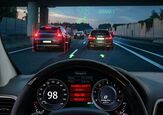

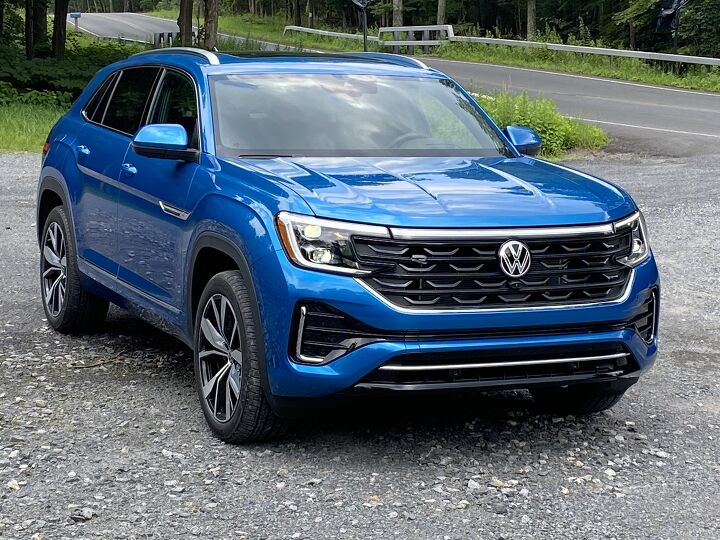

















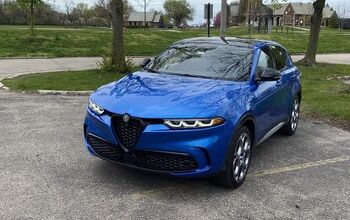
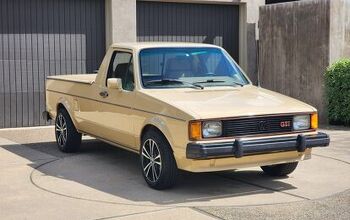
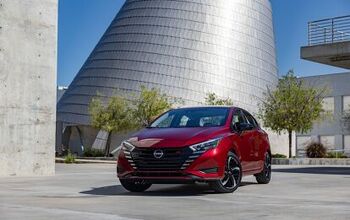




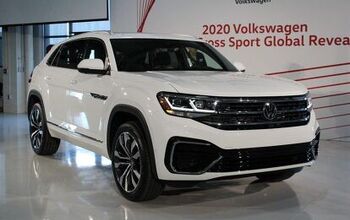
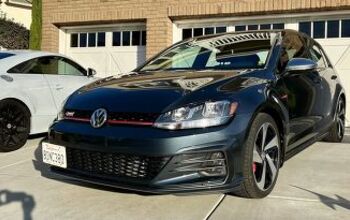



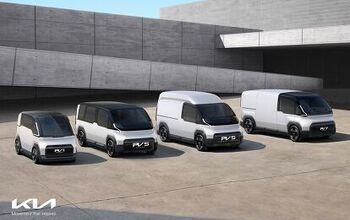
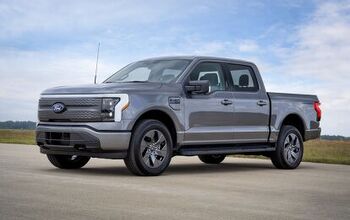
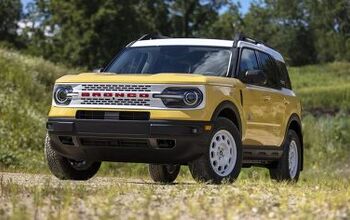
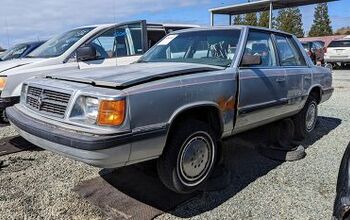
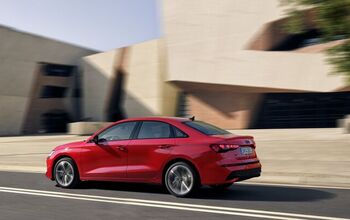

Comments
Join the conversation
I always liked the looks of the Atlas and its sibling, but I am not a masochist enough to own one. Not a big change, but decent enough looking.
So strange that VW replaced the Touareg with this thing. US consumers want this bland, does-nothing CUV but didn't want the overbuilt and very capable Cayenne cousin... I guess that's because the US really wants station wagons. The Atlas took away everything cool that the Touareg had under the skin and made the cabin bigger.